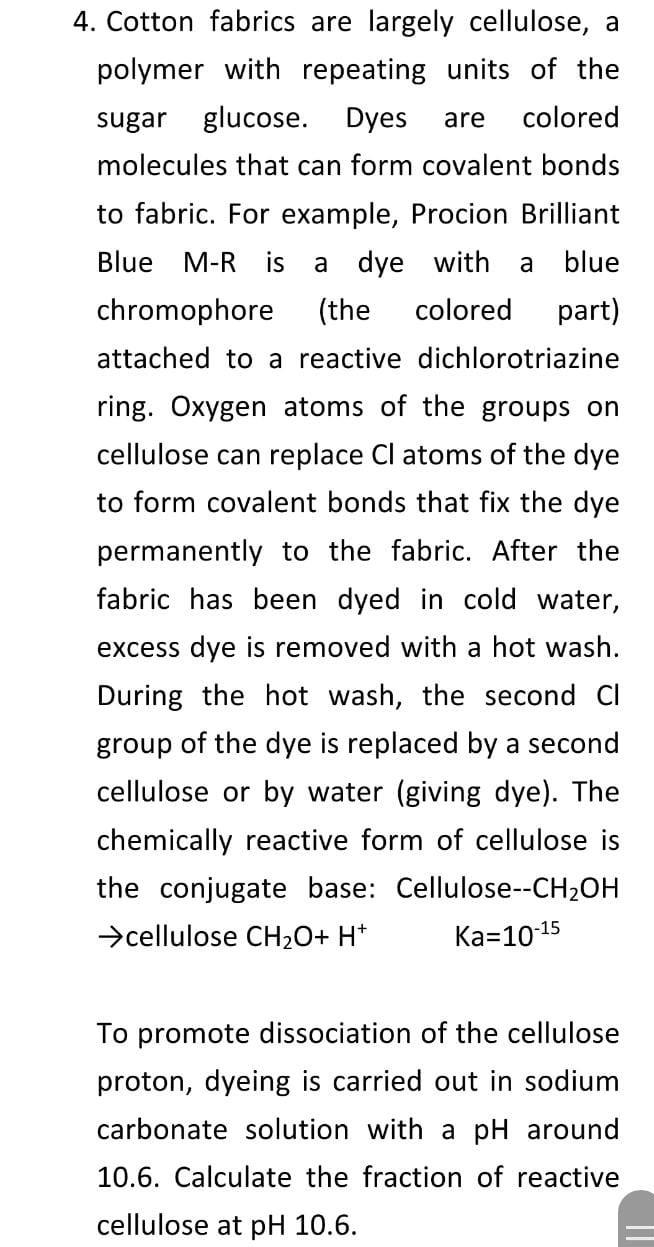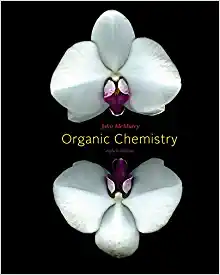Answered step by step
Verified Expert Solution
Question
1 Approved Answer
4. Cotton fabrics are largely cellulose, a polymer with repeating units of the sugar glucose. Dyes are colored molecules that can form covalent bonds to

4. Cotton fabrics are largely cellulose, a polymer with repeating units of the sugar glucose. Dyes are colored molecules that can form covalent bonds to fabric. For example, Procion Brilliant Blue MR is a dye with a blue chromophore (the colored part) attached to a reactive dichlorotriazine ring. Oxygen atoms of the groups on cellulose can replace Cl atoms of the dye to form covalent bonds that fix the dye permanently to the fabric. After the fabric has been dyed in cold water, excess dye is removed with a hot wash. During the hot wash, the second Cl group of the dye is replaced by a second cellulose or by water (giving dye). The chemically reactive form of cellulose is the conjugate base: Cellulose-- CH2OH cellulose CH2O+H+Ka=1015 To promote dissociation of the cellulose proton, dyeing is carried out in sodium carbonate solution with a pH around 10.6. Calculate the fraction of reactive cellulose at pH 10.6
Step by Step Solution
There are 3 Steps involved in it
Step: 1

Get Instant Access to Expert-Tailored Solutions
See step-by-step solutions with expert insights and AI powered tools for academic success
Step: 2

Step: 3

Ace Your Homework with AI
Get the answers you need in no time with our AI-driven, step-by-step assistance
Get Started


